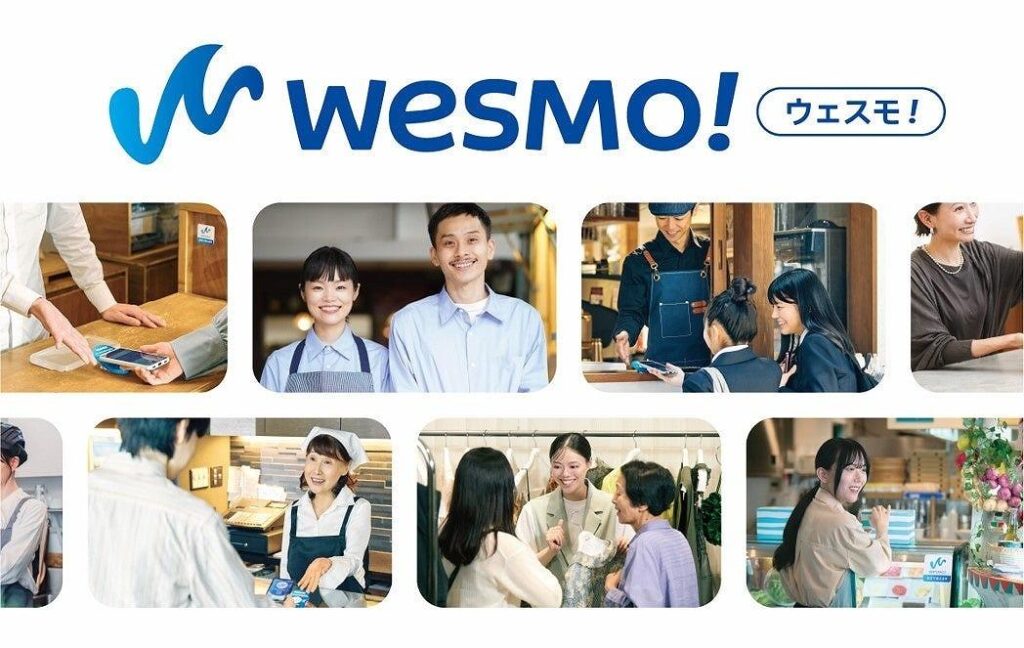(Original article in Japanese was published for FinTech Journal on Jan. 6, 2025)
https://www.sbbit.jp/article/fj/156810
JR West will launch “Wesmo!” in Q1 of fiscal year 2025, an ambitious cashless payment and wallet service integrating various financial functions. This move reflects a growing trend of railway companies expanding into financial services.

What is Wesmo! and JR West’s Financial Expansion? (Source: JR West Press Release)
What is Wesmo!?
Announced on January 21, 2025, Wesmo! aims to enhance daily and business transactions. JR West, the first railway operator registered as a Type II Funds Transfer Service Provider, offers:
For Individual Users
- Charge Function: Load funds via bank accounts, Seven Bank ATMs, or J-WEST Cards.
- Money Transfer: Peer-to-peer transactions among users.
- Point Integration: Earn and use WESTER Points across ICOCA and J-WEST Card services.
For Merchants
- Low-Cost Payment Solution: “BLUE Tag Touch” with zero setup cost and a 1.9% transaction fee.
- Fast Revenue Collection: Next-day settlements.
- B2B Transfers: Free supplier payments to improve efficiency.
Payment Methods
- BLUE Tag Touch: Tap to pay via smartphone.
- QR Code Payment: Alternative for stores without BLUE Tags.
Launch Timeline & Future Features
Merchant recruitment began in January 2025, with planned expansions including:
- ICOCA Charging: Direct top-ups via the Wesmo! app.
- Digital Salary Deposits: Pending government approval, offering payroll integration.
Strategic Goals
- Higher-Value Transactions: Competes with QR code and credit card payments, supporting transactions up to ¥1 million.
- Expanded Transfer Capabilities: Unlike Suica, Wesmo! enables peer-to-peer transfers but imposes limits based on identity verification level.
- Aggressive Merchant Acquisition: Competitive transaction fees (1.9% vs. PayPay’s 1.98%) and next-day payouts enhance merchant appeal.
JR West’s Other Financial Activities, Digital Bonds
In June 2024, JR West issued “WESTER Bonds” using blockchain, engaging investors with loyalty rewards and exclusive perks, reinforcing ties with customers beyond traditional railway services.
Railway-Finance Synergy
Railway and airlines are increasingly integrating financial services:
- JR East: Launched “JRE Bank” in 2024, offering up to 40% Shinkansen fare discounts.
- Keio Corporation: Introduced “KEIO NEOBANK” in 2023.
- Airlines: JAL and ANA have integrated banking and payment services.
However, nationwide adoption may take some time; Suica and ICOCA interoperability took a decade, making Wesmo!’s broader expansion a long-term challenge.
Challenges & Prospects
Wesmo! offers comprehensive features but faces a saturated cashless payment market. With 9 million Wester members, JR West has a solid foundation, yet widespread adoption will take some time. Additionally, differing strategies within the JR Group may hinder nationwide implementation.
While Wesmo! is well-positioned for success, overcoming competition and scaling effectively will be crucial for long-term sustainability.
